The football team at Rutgers University plays away to the University of Nebraska this Saturday.
This could be bad. Very, very bad. Unless you're a Cornhuskers fan.
Before You Go. Nebraska is on the Great Plains. It produces extremes of weather: Very hot in Summer, bitter cold in Winter. Many years ago, Nebraska was playing Colorado on the day after Thanksgiving, and ABC was broadcasting the game, and it was not only very cold, but windy, with the flags all being straight out. It was so cold! (How cold was it?) It was so cold, someone set a parking lot portajohn on fire, thinking it would help the fans outside who couldn't get tickets warm, and thick black smoke drifted over the stadium, making people think there was a more serious fire going on.
This still being September, your problem is going to be heat, not cold. Temperatures for Saturday are expected to be in the low 80s in daylight, and the mid-60s at night. Although the Lincoln Journal Star and the Omaha World-Herald, the State's 2 largest newspapers, are predicting rain for Sunday, Saturday should be dry.
Except for its Western edge, far at the other end of the State, which is in the Mountain Time Zone, Nebraska is in the Central Time Zone, an hour behind New York and New Jersey. Adjust your timepieces accordingly.
Tickets. Yeah, surrrre! Nebraska football hasn't played to an unsold seat at home since October 20, 1962. I'll save you the math: That's 55 years. JFK was President, the Cuban Missile Crisis was going on, and nobody outside England (and a few people in Hamburg, Germany) had yet heard of the Beatles. You wanna get in? Go to a resale service. (A legal one. Not a scalper. They can't be trusted.)
Officially, all tickets are $57. Unofficially, who knows until you log on to the ticket sites.
Getting There. It's 1,296 miles from Times Square in Midtown Manhattan to the State Capitol in Lincoln, Nebraska, and -- oddly -- the same distance from High Point Solutions Stadium in Piscataway, New Jersey to Memorial Stadium, home of the 'Huskers.
Knowing this, your first instinct will be to fly. A round-trip flight to Lincoln Airport will include a changeover at O'Hare in Chicago, but it could be gotten fairly cheap, under $800. Bus 52 will get you downtown in a little over half an hour.
Would you prefer the train? Amtrak has the Lake Shore Limited leaving Penn Station at 3:40 PM on Thursday, and arriving at Union Station in Chicago at 9:45 AM on Friday. The California Zephyr leaves Chicago at 2:00 PM, and arrives in Lincoln at 12:08 AM on Saturday. The reverse trip would leave Lincoln at 3:26 AM on Sunday, arrive in Chicago at 2:50 PM, switch to the Lake Shore Limited at 9:30 PM and arrive back at Penn station at 6:23 PM on Monday. Round-trip fare is $384 -- given the mileage, a cheap trip by Amtrak standards. Haymarket Station is at 277 Pinnacle Arena Drive, a 15-minute walk from Memorial Stadium.
With Greyhound, you have to change buses 3 times: In Pittsburgh, Chicago and Omaha. Round-trip fare is $448, but it can drop to $390 with advanced purchase -- but that's still more than the train. The Greyhound station is at 5250 Superior Street, 3 and a half miles northeast of downtown. Bus 41. So you're really better off taking the train than the bus.
Driving there would be long, but simple, as Interstate 80 can be taken from North Jersey to Lincoln, through New Jersey, Pennsylvania, Ohio, Indiana, Illinois, Iowa and Nebraska. You'd take Exit 401 to Interstate 180 South to the campus.
If you do it right, you should spend about an hour and a half in New Jersey, 5 hours and 15 minutes in Pennsylvania, 4 hours in Ohio, 2 hours and 30 minutes in Indiana, 2 hours and 45 minutes in Illinois, 5 hours and 15 minutes in Iowa, and 1 hour in Nebraska. Total: A little over 22 hours. Including rest stops, and accounting for traffic (you'll be bypassing Cleveland and Chicago, unless that's where you want to make rest stops), we're talking about a 30-hour trip.
Once In the City. Nebraska was dominated by Native American tribes until the Europeans came, starting with Spain in the 1690s. France arrived in 1703, and war between them broke out, with each side getting local tribes on their sides. A massacre near present-day Columbus wiped out Spanish attempts to settle the Plains until 1762, when, desperate for cash during the French and Indian War, France ceded the Louisiana Territory to Spain. The French got it back, but sold it to the U.S. in the Louisiana Purchase of 1803.
The Kansas-Nebraska Act of 1854 cleared the path for Statehood -- and for the American Civil War. Originally, the capital of the Nebraska Territory was Omaha, because of its location on the Missouri River (across from Council Bluffs, Iowa), but upon Statehood on March 1, 1867, the 37th State (they celebrated the 150th Anniversary this year), it was moved to Lancaster. While the County it's in still holds that name, the City was then renamed for Abraham Lincoln.
Although its eastern border is the rather wide Missouri River, Nebraska is the only "triply landlocked State": To reach an ocean, gulf, or bay from Nebraska, one must travel through at least 3 other States or Canadian Provinces. To wit: Either south through Kansas, Oklahoma, and Texas to the Gulf of Mexico; north through South Dakota, North Dakota and Manitoba to Hudson Bay; or west through Wyoming, Idaho, and Oregon to the Pacific Ocean.
The name "Nebraska" comes from the other river, besides the Missouri, that dominates the State, the Platte: "Ni Brasge" meant "Flat water" in the language of local tribes. Congressman William Jennings Bryan, nominated for President by the Democratic Party in 1896, 1900 and 1908, was called The Boy Orator of the Platte, but his speeches and his support were said to be "like the Platte: A mile wide and a foot deep."
About 1.9 million people live in the State, with nearly 1.1 million of them living in the Omaha and Lincoln areas, the easternmost 15 percent of the State. Omaha its largest city, with about 450,000 people; while Lincoln, its capital and the seat of its State university, has about 280,000.
The State has a reputation of being mostly white and very conservative. But it does have minorities, especially in Omaha. That city saw an Anti-Greek Riot in 1909, a race riot in 1919, and the North Omaha Riot in 1966. In addition, it was the birthplace of 2 black American icons: Malcolm X and Bob Gibson.
At 394 feet high, the State Capitol building is the 2nd-tallest in the nation, topped only by Louisiana's. (The tallest building in the entire State is One First National Center, 634 feet high, at 1601 Dodge Street, downtown Omaha.) And Nebraska is unique in that it is the only State with a unicameral legislature: A single house, rather than Senate and a House of Representatives, House of Delegates, or, as we would say in New York and New Jersey, an Assembly.
ZIP Codes for Nebraska begin with the digits 68 and 69. The Area Codes are 308 for the Western part of the State, and 402 (with 531 overlaid) for the Eastern part, including Lincoln and Omaha. The sales tax is 5.5 percent.
O Street, part of U.S. Route 34, divides Lincoln's street addresses into North and South. Addresses west of Salt Creek are labeled West, but east of it, they are not labeled East. At any rate, addresses in downtown Lincoln increase eastward from Salt Creek. StarTran operates local buses, but they stop at 9:55 PM on weekdays and 7:05 PM on Saturdays (Husker gamedays), and don't run at all on Sundays. A single fare is $1.75. Lincoln does not have a beltway.
The University of Nebraska was founded in 1869, and became known in the 20th Century as a center for agricultural and ecological research. The University of Nebraska System maintains the main campus in Lincoln, and also in Omaha (UNO, including the medical school)), Kearny (UNK), and Curtis (Nebraska College of Technical Agriculture, or NCTA).
Its notable athletes in sports other than football include:
* Baseball: Kip Gross, Darin Erstad, Alex Gordon, and former Yankee Joba Chamberlain. Also, Gene Budig, President of the American League from 1994 to 1999. He also served as President of Illinois State and West Virginia University, and Chancellor of the University of Kansas.
* Basketball: Cleveland Cavaliers coach Tyronn Lue.
* Olympic Gold Medalists: Penelope Heyns, swimming for South Africa, 1996; Rulon Gardner, wrestling, 2000; Curtis Tomasevic, bobsled, 2010 Winter Olympics; and Jordan Burroughs, wrestling, 2012.
* Sports Journalism: Shelley Smith '81 of ESPN.
In other fields, Nebraska grads include:
* Arts: Novelist Willa Cather, Class of 1895; Aaron Douglas '22, Harlem Renaissance figure called "the father of African-American art"; talk show host Johnny Carson '49; opera singer Barbara Hendricks '69.
* Science: San Francisco-Oakland Bay Bridge designer Charles Purcell 1906, CNN weather anchor Chad Myers '85.
* Journalism: Jeff Zeleny '96 of CNN.
* Business: Warren Buffett '50, Vinod Gupta '69.
* Military: General John J. Pershing 1893.
* Politics, representing Nebraska unless otherwise stated: Senators Elmer Burkett 1893, Hazel Abel 1908, Kenneth Wherry 1914, James Abdnor '45 of South Dakota, Ben Nelson '63, Chuck Hagel '71 (also Secretary of Defense); Governors Nelson, George Sheldon 1892, Arthur J. Weaver 1895, Adam McMullen 1896, Elmer Holt 1902 of Montana, Robert Cochran 1910, Dwight Griswold 1914, Ralph Brooks '26, Charles Thone '50, and Stanley Hathaway '50 of Wyoming; Representatives Howard Buffett '25 (Warren's father) and John Henry Kyl '47 of Iowa (father of Senator John Kyl of Arizona).
Also, Attorney General Herbert Brownell '24; Secretary of Agriculture Clayton Yuetter '52, Karlus Ulmanis 1909, 1st Prime Minister of Latvia; and Ted Sorenson '51, aide and speechwriter to President John F. Kennedy, and to the 1968 Presidential campaign of Senator Robert F. Kennedy.
Going In. Memorial Stadium is about a mile north of downtown. Bus 55. The official address is One Memorial Stadium Drive. Don't drive in: Despite all those tailgate parties, those are people who have bought season passes. The University website specifically says:
While there is no single-game parking sold through Nebraska Athletics, there are a several convenient ways to get to the stadium on game day.
Fans are encouraged to use the easy-to-use game day shuttle service through StarTran. Shuttle service to and from the stadium begins two hours before kickoff with the last shuttle 45 minutes before kickoff. Shuttles will return to the lots immediately after the game. For more information click here.
The pick-up and drop-off points in 2017 will be:
Southeast Community College (88th and O Street)
SouthPointe Mall (27th and Pine Lake Rd.)
North Star High School (Six blocks east of North 27th and Folkways Blvd.)
Holmes Lake (70th and Van Dorn)
Westfield Shopping Center (66th and O Street)
MSC (901 West Bond)
Memorial Stadium opened in 1923 with a capacity of 31,000, and the demand for tickets raised it to 48,000 in 1964, 62,000 in 1966, and by the 1972 season had been expanded to 73,650. A later round of expansions brought it to 81,000 in 2006 and 87,147 in 2013. The installation of wider seats reduce capacity to the current 85,458.
Despite its classical architecture, reminiscent of so many other 1920s stadiums that, officially and otherwise, were memorials to the dead of World War I, sight lines are not great: No stadium in FBS (formerly Division I-A) has a larger percentage of its seats outside the 20-yard lines. The huge crowds, like St. Louis Cardinals fans nearly all dressed in red, has led to the nickname The Sea of Red.
The stadium was dedicated to all the Nebraskans who served in the Civil War and the Spanish-American War -- both with veterans still alive at that point -- and the 751 citizens of the Cornhusker State who died in World War I. Later, plaques would be dedicated to the 3,839 who died in World War II, the 225 of the Korean War, and the 422 of the Vietnam War.
Each corner has an inscription:
Food. Nebraska is Midwestern, but it was so long in the Big Eight, and then in the Big Twelve, that it hasn't yet figured out what the Big Ten schools figured out long ago: Food is important.
Aside from a nice $8.00 beef brisket sandwich, there's nothing special about Memorial Stadium concessions. You're better off eating before and after the game.
Team History Displays. Nebraska is one of the most storied programs in college football, but until 1962, their historic moments were few and far between. Then came Bob Devaney, for whom their basketball arena is named; and Tom Osborne, for whom the playing surface at Memorial Stadium is named.
Osborne had played quarterback at Hastings College in Nebraska, but was moved to receiver for the San Francisco 49ers in 1959 and the Washington Redskins in 1960 and '61. He was then cut, and went to the University of Nebraska for graduate school.
In 1962, Devaney was named Nebraska's head coach, having been the head coach at Wyoming (a neighboring State, though hardly a neighboring school), and before that having served on the title-winning staffs of Clarence "Biggie" Munn and Hugh "Duffy" Daugherty at Michigan State.
The Cornhuskers hired him after they'd had 6 straight losing seasons, and he turned the program around: They went 9-2 in that 1st season, and haven't played to an unsold seat at home since. On November 3, 1962, the sellout streak started, as 36,501 fans came to see them lose to Big Eight neighbors Missouri 16-7. The streak is now at 356 consecutive games.
Interestingly, from a New York perspective, the '62 Huskers went to the Gotham Bowl, held at Yankee Stadium on December 15. In a bit of foreshadowing, they played the University of Miami, and won a thriller, 36-34. But only 6,166 fans came out, leaving The Stadium with over 60,000 empty seats, and the Bowl was never played again.
In 1964, Devaney named Osborne as an assistant coach; in 1969, offensive coordinator; and in 1973, Devaney was named athletic director, handing the head coaching duties over to Osborne. He remained in charge through the 1997 season, the year Devaney died, had the field named for him in 1999, got elected to Congress in 2001, left Congress to run for Governor in 2006 but lost the Republican Primary to the incumbent, and then served as athletic director from 2007 to 2013.
He is still alive, age 80, and now has a statue outside the stadium, showing him posing with Brook Berringer, the quarterback on his 1994 and '95 National Championship teams, who was killed in a plane crash in 1996, right before he would have been selected in the NFL Draft.
On the east side of the Stadium is the Husker Legacy Statue, honoring the 4 National Championship teams that they officially claim: 1970, 1971, 1994 and 1995. They don't represent any particular players, but were modeled after a photograph taken during the 1995 Nebraska-Kansas State game.
Various polling organizations have also awarded Nebraska National Championships in 1915, 1921, 1980, 1981, 1983, 1983, 1984, 1993 and 1999, but only the 4 on the statue are considered official, although they shared the 1970 title with Texas, as the polls were split.
Nebraska was in the league officially known as the Missouri Valley Intercollegiate Athletic Association from 1907 to 1964, but nicknamed the Big Six from 1928 to 1948, the Big Seven from 1948 to 1957, and the Big Eight from 1957 to 1964, at which point it was officially renamed the Big Eight Conference.
They won the Conference Championship in 1907, 1910, 1911, 1912, 1913, 1914, 1915, 1916, 1917, 1921, 1922, 1923, 1928, 1929, 1931, 1932, 1933, 1935, 1936, 1937, 1940, 1963, 1964 1965, 1966, 1969, 1970, 1971, 1972, 1975, 1978, 1981, 1982, 1983, 1984, 1988, 1991, 1992, 1993, 1994 and 1995. (The gap between 1940 and 1963 was due to the rise of the University of Oklahoma as a football power.)
In 1996, the Big 8 took on 4 Texas teams from the dissolved Southwest Conference, and became the Big Twelve Conference. Nebraska won the title in 1997 and 1999. In 2011, they moved to the Big Ten. They won a Division Championship in 2012, but lost the Championship Game, and haven't added to their 43 Conference Championships.
Nebraska has won the Orange Bowl in 1964, 1971, 1972, 1973, 1983, 1995, 1996 and 1998; the Cotton Bowl in 1974; the Sugar Bowl in 1975, 1985 and 1987; and the Fiesta Bowl in 1996 and 2000. Despite their entry into the Big Ten, they've only been in the Rose Bowl once, and that was before the Big Ten winner got an automatic berth there, in 1941, when they lost to Stanford.
Three Huskers have had their uniform numbers retired: 20, running back Johnny Rodgers, from the 1970 and '71 National Champions, and in 1972 the school's 1st Heisman Trophy winner; 60, center Tom Novak, from the late 1940s; and 64, offensive tackle Bob Brown, from the early 1960s. Also winning the Heisman at Nebraska have been 1983 running back Mike Rozier (30), and 2001 quarterback Eric Crouch (7).
Cornhuskers in the College Football Hall of Fame include:
* From the 1910s: Ends Guy Chamberlin and Clarence Swanson.
* From the 1920s: Tackle Ed Weir. Tackle William "Link" Lyman also played for them in the early 1920s.
* From the 1930s: Coaches Dana X. Bible and Lawrence Jones, fullbacks George Sauer and Sam Francis, and tackle Forrest Behm.
* From the 1950s: Halfback Bobby Reynolds. Center Mick Tinglehoff also played for them as the '50s turned to the '60s.
* From the 1960s: Devaney, Brown, and guard Wayne Meylan.
* From the 1970s: Devaney, Osborne, Rodgers, and defensive tackle Rich Glover, from Jersey City.
* From the 1980s: Osborne, Rozier, and center Dave Rimington, the only 2-time winner of the Outland Trophy as the nation's best interior lineman. Mount Holly, New Jersey native Irving Fryar, later a 5-time Pro Bowler with New England, Miami and Philadelphia, also played for that 1983 team that came within a missed 2-point conversion against Miami in the 1984 Orange Bowl of being crowned not just National Champions, but perhaps the greatest team ever. (The Huskers would finally get their revenge in the 1995 Orange Bowl.) The year before, they also had future San Francisco Super Bowl running back Roger Craig.
* From the 1990s: Osborne, Frazier, tackle Will Shields, linebacker Trev Alberts, and defensive end Grant Wistrom. From the 2000s, defensive tackle Ndamukong Suh might join them.
There are 5 Nebraska players in the Pro Football Hall of Fame: Lyman, Chamberlin, Tinglehoff, Brown and Shields. Their Heisman winners had less luck. Although Rodgers won the 1974 Grey Cup with the Montreal Alouettes, a knee injury -- in practice, no less -- with the San Diego Chargers ended his career in 1978. Rozier had an unremarkable pro career with the USFL's Pittsburgh Maulers and the NFL's Houston Oilers. And Crouch was drafted by the St. Louis Rams, but, like Osborne, they wanted him as a receiver. He refused to switch, and the only pro action he saw, after bouncing around the NFL, was with the 2005 Hamburg Sea Devils of NFL Europa and the 2006 Toronto Argonauts in the CFL.
For many years, Nebraska's big rival was the University of Oklahoma. The rivalry was usually played on Thanksgiving weekend. In 1959, Nebraska beat Oklahoma, ending the Sooners' 74-game conference winning streak. In 1963, Nebraska won a game that the Big 8 refused to postpone, despite President Kennedy's assassination the day before.
On November 25, 1971, they met in Norman, Oklahoma with the Huskers ranked Number 1 in the country, and the Sooners ranked Number 2. The entire country was watching that Thanksgiving Day, and, like a few other games in that period, was hyped as "The Game of the Century." It lived up to the billing, and Johnny Rodgers and company won 35-31. In 1978, Nebraska won the regular-season game, as Number 4 beating Number 1 Oklahoma, but a rematch was set up in the Orange Bowl (which then took the Big 8 winner), and Oklahoma won it. In 1987, Oklahoma was Number 2 when they beat Number 1 Nebraska.
The Big 8's conversion into the Big 12 put the teams in separate divisions, as Oklahoma and Oklahoma State were put in with the Texas teams to balance the divisions out, ending Huskers-Sooners as an annual rivalry. Nebraska's move to the Big Ten makes the matchup even rarer: They haven't played since Oklahoma beat them in the 2010 Big 12 Championship Game, and are not scheduled to meet again until 2021 in Norman, to celebrate the 50th Anniversary of that Game of the Century. Oklahoma leads the rivalry 45-38-3, but it's 42-23 Oklahoma since 1943, 11-7 Nebraska since 1988, and 6-2 Oklahoma since 2000.
Nebraska played neighboring Missouri for a Victory Bell, with Nebraska leading the series 65-36-3, but with the Huskers moving to the Big Ten and the Tigers to the Southeastern Conference, it is unlikely to be played again, except maybe in a bowl game.
With the rise of the University of Colorado as a football power in the late 1980s, they replaced Oklahoma as Nebraska's day-after-Thanksgiving game, as the Cornhuskers-Buffaloes game became, despite also being a bordering-States matchup, more than just another Big 8 matchup. Nebraska leads the series 49-18-2; 40-8-1 since 1962; 17-7-1 since 1986. With Nebraska now in the Big 10 and Colorado in the Pac-12, this game hasn't been played since 2010, but will be played in Lincoln next season.
A rivalry with neighboring Iowa would seem like a natural, given both teams' status as the sports team in their respective States. But being in different leagues meant that they met only sporadically, and, while Iowa State was in the Big 8/12 (and still is), they never developed a rivalry with Nebraska. But Nebraska's move to the Big 10 began the awarding of The Heroes Trophy. It has replaced the Colorado rivalry as the day after Thanksgiving rivalry. Nebraska leads the series 29-15-3, but, since the trophy began, it's a 3-3 tie.
(UPDATE: Through the 2019 season, Nebraska now leads Colorado 49-20-2, and Iowa 29-18-3.)
Stuff. There is no official team store at Memorial Stadium. Husker Headquarters is located at 1120 P Street, 5 blocks south of the Stadium. And the University Bookstore is at 1500 S Street, 1 block south and 2 blocks east of the Stadium.
In 2008, Mike Babcock published the coffee-table book University of Nebraska Football Vault. It is probably the most comprehensive single-volume history of the program. Osborne published a memoir in 2000, Faith in the Game: Lessons on Football, Work, and Life. In 2005, Michael Corcoran published The Game of the Century: Nebraska vs. Oklahoma in College Football's Ultimate Battle, November 25, 1971. In 2008, the DVD Tom Osborne's Nebraska Cornhuskers was released.
During the Game. You will almost certainly be safe. Nebraska fans are a friendly bunch, with the occasional exception. The Colorado rivalry brought one of those out in the late 1980s, as Buffalo fans got a bit too big for their britches, and started some nasty taunts, inspiring Husker fans to invoke the cancer-stricken Colorado quarterback Sal Aunese, with the chant, "Sal is dead, go Big Red!" Osborne put a stop to that.
Nebraska has a good band, and "The Cornhusker Fight Song" and the "Go Big Red" chant are real rousers. The student section is known as the Boneyard.
There are 2 mascots. Herbie Husker has been around since 1974, and a childlike Lil' Red was added in 1994. Whether he's supposed to be Herbie's son isn't clear: He's actually taller (even with Herbie's cowboy hat), and there's no facial resemblance. At the start of the game, they ride a tandem bike onto the field, and Herbie rides in front, so, even if he's not the Dad, he's definitely the commanding officer. Herbie has been elected to the Mascot Hall of Fame.
When Devaney was coach, he had the defensive team wear black shirts, to differentiate from the red-shirted offense. Therefore, even though Nebraska wears red jerseys -- and, on occasion, all-red uniforms -- at home, the defense remains known as the Blackshirts.
Nebraska's roster had included Keyshawn Johnson Jr., but he's officially listed as being on a leave of absence, and expects to return next season. He's a freshman, so they'll treat this as a redshirt season. Like his father the ex-Jet, he's a receiver, and wears Number 3 in college. (His father wore it at USC, and wore 19 in the NFL.)
While there are minor-league sports teams in the State, the nearest major-league ones are far away, in Kansas City and Denver. So Husker football is pretty much all they've got. That, and the program's success, is why they've sold out every home game for 55 years.
Indeed, on December 4, 1982, while the worst recession between the late 1930s and the late 2000s was at its depth, and the Farm Belt was particularly hard-hit -- and you thought President Ronald Reagan's tax cuts had helped -- 16,000 Nebraska fans managed to go to a game. Against Hawaii. In Honolulu. And Aloha Stadium only seats 50,000 people. They turned it into a neutral-site game. (Nebraska won, 37-16.)
So the fans can be excused for the banners around the stadium, indicating their places of origin, much like the bigger English soccer teams: "Californians for Nebraska," "Floridians for Nebraska," and so on. And perhaps they can even be forgiven for their variation on the Wisconsin Badgers' and Green Bay Packers' Cheesehead hats: Cobheads.
Lincoln has the Nebraska History Museum, at 131 Centennial Mall North; the Lincoln Children's Museum, just across the street at 1420 P Street; the University of Nebraska State Museum, at 645 N. 15th Street, 2 blocks east of Memorial Stadium; and the Sheldon Museum of Art, at 1209 R Street, 2 blocks south of the stadium.
The Beatles never performed in Nebraska. Elvis Presley did. He sang in Lincoln at the University of Nebraska Coliseum in Lincoln on May 19, 1956; and at the Pershing Municipal Auditorium on June 20, 1977, on what turned out to be his last tour. Built in 1926, the Coliseum still stands, hosting Cornhusker volleyball, at 1350 Vine Street. Bus 55.
The Pershing Center, as the newer building is now known, also still stands, downtown, at 226 Centennial Mall South. Both buildings seat about 4,000 people.
Elvis sang 7 times at the Omaha Civic Auditorium: Twice on May 20, 1956; twice on June 30, 1974; once the next day, July 1, 1974; on April 22, 1976; and on June 19, 1977. This was the concert taped for a CBS special that was to air at Christmastime, but the footage was considered unusable. (Most of what was shown was from 2 days later, in Rapid City, South Dakota.) After he died on August 16, it aired on October 3. Roy Carr and Mick Farren, authors of Elvis: The Illustrated Record, said that Elvis looked so bad, "Had it been shown during his lifetime, it would have caused more irrevocable damage to what was left of his career than almost a decade of starring in third-rate movies."
The Civic Auditorium was home court for Creighton University basketball from 1955 to 2003, and was home ice for minor-league hockey teams. The NBA's Kansas City-Omaha Kings played some home games there from 1972 to 1975, before dropping the Omaha from their name and committing to Kansas City -- at least, until 1985, when they moved to Sacramento. Joe Frazier defended the Heavyweight Championship there by beating Ron Stander on May 25, 1972.
And it was the site of the Vice Presidential Debate of October 5, 1988, in which the Republican nominee, Senator Dan Quayle of Indiana, was asked about his level of experience and maturity. He was 41, younger than any President had ever been, and this was relevant because, just since World War II, Franklin Roosevelt had died in office, Dwight D. Eisenhower had a heart attack and a stroke, John F. Kennedy was shot and killed, Ronald Reagan had been shot and survived, Harry Truman and Gerald Ford had been shot at, and Richard Nixon had been forced to resign.
Quayle had been in the Senate for 8 years, and the Congress overall for 12 years. He said, with some justification, that this made his experience comparable to that of JFK. But his Democratic opponent, Senator Lloyd Bentsen of Texas, pointed out that he served in the House of Representatives with JFK, and knew that JFK's goals for serving the American people were very different to Quayle's, and said, "Senator, you're no Jack Kennedy." It didn't change the result of the election -- Vice President George Bush still won a landslide over Governor Michael Dukakis of Massachusetts -- but it forever branded Quayle as a whiny nincompoop, an image he fought hard, with occasional counterproductive results.
The Ralston Arena opened in 2012, making the Civic Auditorium obsolete, and it was demolished last year. At the moment, the site remains vacant. 1804 Capitol Avenue. The new arena is the home of the Omaha Lancers of the U.S. Hockey League. 7300 Q Street, in Ralston, 8 miles southeast of downtown Omaha. Bus 13.
There is 1 President with a tie to Nebraska, despite the 3 tries of William Jennings Bryan. On July 14, 1913, Leslie Lynch King Jr. was born at the family home in Omaha. But Les King Sr. was abusive to his wife, and she divorced him, moving to Grand Rapids, Michigan, and marrying a man named Gerald Rudolph Ford. Her new husband adopted the son and gave him his own name, and he became a University of Michigan football star, a Congressman, House Minority Leader, Vice President, and, from August 9, 1974 to January 20, 1977, the 38th President of the United States.
But in 1970, no one knew that House Minority Leader Jerry Ford had a chance of becoming President. And he had become so identified with Michigan in general, and Grand Rapids in particular, that hardly anybody knew (although he did) that he had been born in Omaha. And so, that year, the house where he was born, a house of which he had no memory, was demolished. After he became President, a reconstruction was built. 3202 Woolworth Avenue, about 2 miles southwest of downtown. Bus 36.
His Presidential Library is on the Michigan campus in Ann Arbor, and his Presidential Museum, unique among such, is not in the same complex, or even the same city, as his Library, but is rather in his hometown of Grand Rapids.
Most TV shows and movies set in Nebraska have been Westerns. The 1939 film Union Pacific inspired a 1958-59 TV series. The following season, 1959-60, Pony Express was syndicated. More recently, from 1989 to 1992, ABC aired a show about the Pony Express, The Young Riders, with Stephen Baldwin as William F. Cody (the future Buffalo Bill really had ridden with the Express), Josh Brolin as James Butler "Wild Bill" Hickok, and Christopher Pettit as a young, not yet notorious, Jesse James.
Also in 1989, CBS aired a Nebraska-based sitcom titled Heartland, starring Brian Keith. Ironically, the theme song was sung by that New Yorkiest of singers, doo-wop legend Dion DiMucci. The year before, CBS aired First Impressions, with Brad Garrett playing an Omaha insurance agent, but it tanked.
Movies set in Nebraska tend to be either Westerns, or based on the 1958 killing spree of teenage psychopath Charlie Starkweather. Exceptions: Boys Town (starring Spencer Tracy as the Omaha-based orphanage leader, Father Edward Flanagan), Fail Safe, Election, and 2 of Jack Nicholson's better films, Terms of Endearment and About Schmidt.
And many films set in Nebraska weren't filmed there at all: Caddyshack was filmed in Florida, Children of the Corn in Iowa, and Boys Don't Cry in Texas.
*
Nebraska football is an institution. Possibly, on gameday, a madhouse. But, if you can get into the asylum, it's one of the great experiences in American sports.
The State House in Lincoln
ZIP Codes for Nebraska begin with the digits 68 and 69. The Area Codes are 308 for the Western part of the State, and 402 (with 531 overlaid) for the Eastern part, including Lincoln and Omaha. The sales tax is 5.5 percent.
O Street, part of U.S. Route 34, divides Lincoln's street addresses into North and South. Addresses west of Salt Creek are labeled West, but east of it, they are not labeled East. At any rate, addresses in downtown Lincoln increase eastward from Salt Creek. StarTran operates local buses, but they stop at 9:55 PM on weekdays and 7:05 PM on Saturdays (Husker gamedays), and don't run at all on Sundays. A single fare is $1.75. Lincoln does not have a beltway.
The University of Nebraska was founded in 1869, and became known in the 20th Century as a center for agricultural and ecological research. The University of Nebraska System maintains the main campus in Lincoln, and also in Omaha (UNO, including the medical school)), Kearny (UNK), and Curtis (Nebraska College of Technical Agriculture, or NCTA).
Its notable athletes in sports other than football include:
* Baseball: Kip Gross, Darin Erstad, Alex Gordon, and former Yankee Joba Chamberlain. Also, Gene Budig, President of the American League from 1994 to 1999. He also served as President of Illinois State and West Virginia University, and Chancellor of the University of Kansas.
* Basketball: Cleveland Cavaliers coach Tyronn Lue.
* Olympic Gold Medalists: Penelope Heyns, swimming for South Africa, 1996; Rulon Gardner, wrestling, 2000; Curtis Tomasevic, bobsled, 2010 Winter Olympics; and Jordan Burroughs, wrestling, 2012.
* Sports Journalism: Shelley Smith '81 of ESPN.
In other fields, Nebraska grads include:
* Arts: Novelist Willa Cather, Class of 1895; Aaron Douglas '22, Harlem Renaissance figure called "the father of African-American art"; talk show host Johnny Carson '49; opera singer Barbara Hendricks '69.
* Science: San Francisco-Oakland Bay Bridge designer Charles Purcell 1906, CNN weather anchor Chad Myers '85.
* Journalism: Jeff Zeleny '96 of CNN.
* Business: Warren Buffett '50, Vinod Gupta '69.
* Military: General John J. Pershing 1893.
* Politics, representing Nebraska unless otherwise stated: Senators Elmer Burkett 1893, Hazel Abel 1908, Kenneth Wherry 1914, James Abdnor '45 of South Dakota, Ben Nelson '63, Chuck Hagel '71 (also Secretary of Defense); Governors Nelson, George Sheldon 1892, Arthur J. Weaver 1895, Adam McMullen 1896, Elmer Holt 1902 of Montana, Robert Cochran 1910, Dwight Griswold 1914, Ralph Brooks '26, Charles Thone '50, and Stanley Hathaway '50 of Wyoming; Representatives Howard Buffett '25 (Warren's father) and John Henry Kyl '47 of Iowa (father of Senator John Kyl of Arizona).
Also, Attorney General Herbert Brownell '24; Secretary of Agriculture Clayton Yuetter '52, Karlus Ulmanis 1909, 1st Prime Minister of Latvia; and Ted Sorenson '51, aide and speechwriter to President John F. Kennedy, and to the 1968 Presidential campaign of Senator Robert F. Kennedy.
Going In. Memorial Stadium is about a mile north of downtown. Bus 55. The official address is One Memorial Stadium Drive. Don't drive in: Despite all those tailgate parties, those are people who have bought season passes. The University website specifically says:
While there is no single-game parking sold through Nebraska Athletics, there are a several convenient ways to get to the stadium on game day.
Fans are encouraged to use the easy-to-use game day shuttle service through StarTran. Shuttle service to and from the stadium begins two hours before kickoff with the last shuttle 45 minutes before kickoff. Shuttles will return to the lots immediately after the game. For more information click here.
The pick-up and drop-off points in 2017 will be:
The stadium was dedicated to all the Nebraskans who served in the Civil War and the Spanish-American War -- both with veterans still alive at that point -- and the 751 citizens of the Cornhusker State who died in World War I. Later, plaques would be dedicated to the 3,839 who died in World War II, the 225 of the Korean War, and the 422 of the Vietnam War.
Each corner has an inscription:
- Southeast: "In Commemoration of the men of Nebraska who served and fell in the Nation's Wars."
- Southwest: "Not the victory but the action; Not the goal but the game; In the deed the glory."
- Northwest: "Courage; Generosity; Fairness; Honor; In these are the true awards of manly sport."
- Northeast: "Their Lives they held their country's trust; They kept its faith; They died its heroes."
UPDATE: On October 6, 2017, Thrillist compiled a list of their Best
College Football Stadiums, the top 19 percent of
college football, 25 out of 129. Nebraska ranked 17th: "The fans' thick-and-thin passion makes this place a destination in itself. That, and the red balloons they release after Nebraska's first score."
Aside from a nice $8.00 beef brisket sandwich, there's nothing special about Memorial Stadium concessions. You're better off eating before and after the game.
Team History Displays. Nebraska is one of the most storied programs in college football, but until 1962, their historic moments were few and far between. Then came Bob Devaney, for whom their basketball arena is named; and Tom Osborne, for whom the playing surface at Memorial Stadium is named.
Osborne had played quarterback at Hastings College in Nebraska, but was moved to receiver for the San Francisco 49ers in 1959 and the Washington Redskins in 1960 and '61. He was then cut, and went to the University of Nebraska for graduate school.
In 1962, Devaney was named Nebraska's head coach, having been the head coach at Wyoming (a neighboring State, though hardly a neighboring school), and before that having served on the title-winning staffs of Clarence "Biggie" Munn and Hugh "Duffy" Daugherty at Michigan State.
The Cornhuskers hired him after they'd had 6 straight losing seasons, and he turned the program around: They went 9-2 in that 1st season, and haven't played to an unsold seat at home since. On November 3, 1962, the sellout streak started, as 36,501 fans came to see them lose to Big Eight neighbors Missouri 16-7. The streak is now at 356 consecutive games.
Interestingly, from a New York perspective, the '62 Huskers went to the Gotham Bowl, held at Yankee Stadium on December 15. In a bit of foreshadowing, they played the University of Miami, and won a thriller, 36-34. But only 6,166 fans came out, leaving The Stadium with over 60,000 empty seats, and the Bowl was never played again.
In 1964, Devaney named Osborne as an assistant coach; in 1969, offensive coordinator; and in 1973, Devaney was named athletic director, handing the head coaching duties over to Osborne. He remained in charge through the 1997 season, the year Devaney died, had the field named for him in 1999, got elected to Congress in 2001, left Congress to run for Governor in 2006 but lost the Republican Primary to the incumbent, and then served as athletic director from 2007 to 2013.
Stadium plaque honoring Devaney and Osborne
He is still alive, age 80, and now has a statue outside the stadium, showing him posing with Brook Berringer, the quarterback on his 1994 and '95 National Championship teams, who was killed in a plane crash in 1996, right before he would have been selected in the NFL Draft.
Osborne laying flowers at the statue, in Berringer's memory
On the east side of the Stadium is the Husker Legacy Statue, honoring the 4 National Championship teams that they officially claim: 1970, 1971, 1994 and 1995. They don't represent any particular players, but were modeled after a photograph taken during the 1995 Nebraska-Kansas State game.
Various polling organizations have also awarded Nebraska National Championships in 1915, 1921, 1980, 1981, 1983, 1983, 1984, 1993 and 1999, but only the 4 on the statue are considered official, although they shared the 1970 title with Texas, as the polls were split.
Nebraska was in the league officially known as the Missouri Valley Intercollegiate Athletic Association from 1907 to 1964, but nicknamed the Big Six from 1928 to 1948, the Big Seven from 1948 to 1957, and the Big Eight from 1957 to 1964, at which point it was officially renamed the Big Eight Conference.
They won the Conference Championship in 1907, 1910, 1911, 1912, 1913, 1914, 1915, 1916, 1917, 1921, 1922, 1923, 1928, 1929, 1931, 1932, 1933, 1935, 1936, 1937, 1940, 1963, 1964 1965, 1966, 1969, 1970, 1971, 1972, 1975, 1978, 1981, 1982, 1983, 1984, 1988, 1991, 1992, 1993, 1994 and 1995. (The gap between 1940 and 1963 was due to the rise of the University of Oklahoma as a football power.)
In 1996, the Big 8 took on 4 Texas teams from the dissolved Southwest Conference, and became the Big Twelve Conference. Nebraska won the title in 1997 and 1999. In 2011, they moved to the Big Ten. They won a Division Championship in 2012, but lost the Championship Game, and haven't added to their 43 Conference Championships.
Nebraska has won the Orange Bowl in 1964, 1971, 1972, 1973, 1983, 1995, 1996 and 1998; the Cotton Bowl in 1974; the Sugar Bowl in 1975, 1985 and 1987; and the Fiesta Bowl in 1996 and 2000. Despite their entry into the Big Ten, they've only been in the Rose Bowl once, and that was before the Big Ten winner got an automatic berth there, in 1941, when they lost to Stanford.
Three Huskers have had their uniform numbers retired: 20, running back Johnny Rodgers, from the 1970 and '71 National Champions, and in 1972 the school's 1st Heisman Trophy winner; 60, center Tom Novak, from the late 1940s; and 64, offensive tackle Bob Brown, from the early 1960s. Also winning the Heisman at Nebraska have been 1983 running back Mike Rozier (30), and 2001 quarterback Eric Crouch (7).
"Johnny R, Superstar"
Cornhuskers in the College Football Hall of Fame include:
* From the 1910s: Ends Guy Chamberlin and Clarence Swanson.
* From the 1920s: Tackle Ed Weir. Tackle William "Link" Lyman also played for them in the early 1920s.
* From the 1930s: Coaches Dana X. Bible and Lawrence Jones, fullbacks George Sauer and Sam Francis, and tackle Forrest Behm.
* From the 1950s: Halfback Bobby Reynolds. Center Mick Tinglehoff also played for them as the '50s turned to the '60s.
* From the 1960s: Devaney, Brown, and guard Wayne Meylan.
* From the 1970s: Devaney, Osborne, Rodgers, and defensive tackle Rich Glover, from Jersey City.
* From the 1980s: Osborne, Rozier, and center Dave Rimington, the only 2-time winner of the Outland Trophy as the nation's best interior lineman. Mount Holly, New Jersey native Irving Fryar, later a 5-time Pro Bowler with New England, Miami and Philadelphia, also played for that 1983 team that came within a missed 2-point conversion against Miami in the 1984 Orange Bowl of being crowned not just National Champions, but perhaps the greatest team ever. (The Huskers would finally get their revenge in the 1995 Orange Bowl.) The year before, they also had future San Francisco Super Bowl running back Roger Craig.
* From the 1990s: Osborne, Frazier, tackle Will Shields, linebacker Trev Alberts, and defensive end Grant Wistrom. From the 2000s, defensive tackle Ndamukong Suh might join them.
There are 5 Nebraska players in the Pro Football Hall of Fame: Lyman, Chamberlin, Tinglehoff, Brown and Shields. Their Heisman winners had less luck. Although Rodgers won the 1974 Grey Cup with the Montreal Alouettes, a knee injury -- in practice, no less -- with the San Diego Chargers ended his career in 1978. Rozier had an unremarkable pro career with the USFL's Pittsburgh Maulers and the NFL's Houston Oilers. And Crouch was drafted by the St. Louis Rams, but, like Osborne, they wanted him as a receiver. He refused to switch, and the only pro action he saw, after bouncing around the NFL, was with the 2005 Hamburg Sea Devils of NFL Europa and the 2006 Toronto Argonauts in the CFL.
For many years, Nebraska's big rival was the University of Oklahoma. The rivalry was usually played on Thanksgiving weekend. In 1959, Nebraska beat Oklahoma, ending the Sooners' 74-game conference winning streak. In 1963, Nebraska won a game that the Big 8 refused to postpone, despite President Kennedy's assassination the day before.
On November 25, 1971, they met in Norman, Oklahoma with the Huskers ranked Number 1 in the country, and the Sooners ranked Number 2. The entire country was watching that Thanksgiving Day, and, like a few other games in that period, was hyped as "The Game of the Century." It lived up to the billing, and Johnny Rodgers and company won 35-31. In 1978, Nebraska won the regular-season game, as Number 4 beating Number 1 Oklahoma, but a rematch was set up in the Orange Bowl (which then took the Big 8 winner), and Oklahoma won it. In 1987, Oklahoma was Number 2 when they beat Number 1 Nebraska.
As Keith Jackson of ABC, who broadcast a few of these,
including the 1971 "Game of the Century,"
said many times, about many rivalries,
"These two teams just... don't... like each other!"
The Big 8's conversion into the Big 12 put the teams in separate divisions, as Oklahoma and Oklahoma State were put in with the Texas teams to balance the divisions out, ending Huskers-Sooners as an annual rivalry. Nebraska's move to the Big Ten makes the matchup even rarer: They haven't played since Oklahoma beat them in the 2010 Big 12 Championship Game, and are not scheduled to meet again until 2021 in Norman, to celebrate the 50th Anniversary of that Game of the Century. Oklahoma leads the rivalry 45-38-3, but it's 42-23 Oklahoma since 1943, 11-7 Nebraska since 1988, and 6-2 Oklahoma since 2000.
Nebraska played neighboring Missouri for a Victory Bell, with Nebraska leading the series 65-36-3, but with the Huskers moving to the Big Ten and the Tigers to the Southeastern Conference, it is unlikely to be played again, except maybe in a bowl game.
With the rise of the University of Colorado as a football power in the late 1980s, they replaced Oklahoma as Nebraska's day-after-Thanksgiving game, as the Cornhuskers-Buffaloes game became, despite also being a bordering-States matchup, more than just another Big 8 matchup. Nebraska leads the series 49-18-2; 40-8-1 since 1962; 17-7-1 since 1986. With Nebraska now in the Big 10 and Colorado in the Pac-12, this game hasn't been played since 2010, but will be played in Lincoln next season.
A rivalry with neighboring Iowa would seem like a natural, given both teams' status as the sports team in their respective States. But being in different leagues meant that they met only sporadically, and, while Iowa State was in the Big 8/12 (and still is), they never developed a rivalry with Nebraska. But Nebraska's move to the Big 10 began the awarding of The Heroes Trophy. It has replaced the Colorado rivalry as the day after Thanksgiving rivalry. Nebraska leads the series 29-15-3, but, since the trophy began, it's a 3-3 tie.
(UPDATE: Through the 2019 season, Nebraska now leads Colorado 49-20-2, and Iowa 29-18-3.)
Stuff. There is no official team store at Memorial Stadium. Husker Headquarters is located at 1120 P Street, 5 blocks south of the Stadium. And the University Bookstore is at 1500 S Street, 1 block south and 2 blocks east of the Stadium.
In 2008, Mike Babcock published the coffee-table book University of Nebraska Football Vault. It is probably the most comprehensive single-volume history of the program. Osborne published a memoir in 2000, Faith in the Game: Lessons on Football, Work, and Life. In 2005, Michael Corcoran published The Game of the Century: Nebraska vs. Oklahoma in College Football's Ultimate Battle, November 25, 1971. In 2008, the DVD Tom Osborne's Nebraska Cornhuskers was released.
During the Game. You will almost certainly be safe. Nebraska fans are a friendly bunch, with the occasional exception. The Colorado rivalry brought one of those out in the late 1980s, as Buffalo fans got a bit too big for their britches, and started some nasty taunts, inspiring Husker fans to invoke the cancer-stricken Colorado quarterback Sal Aunese, with the chant, "Sal is dead, go Big Red!" Osborne put a stop to that.
Nebraska has a good band, and "The Cornhusker Fight Song" and the "Go Big Red" chant are real rousers. The student section is known as the Boneyard.
There are 2 mascots. Herbie Husker has been around since 1974, and a childlike Lil' Red was added in 1994. Whether he's supposed to be Herbie's son isn't clear: He's actually taller (even with Herbie's cowboy hat), and there's no facial resemblance. At the start of the game, they ride a tandem bike onto the field, and Herbie rides in front, so, even if he's not the Dad, he's definitely the commanding officer. Herbie has been elected to the Mascot Hall of Fame.
When Devaney was coach, he had the defensive team wear black shirts, to differentiate from the red-shirted offense. Therefore, even though Nebraska wears red jerseys -- and, on occasion, all-red uniforms -- at home, the defense remains known as the Blackshirts.
While there are minor-league sports teams in the State, the nearest major-league ones are far away, in Kansas City and Denver. So Husker football is pretty much all they've got. That, and the program's success, is why they've sold out every home game for 55 years.
Indeed, on December 4, 1982, while the worst recession between the late 1930s and the late 2000s was at its depth, and the Farm Belt was particularly hard-hit -- and you thought President Ronald Reagan's tax cuts had helped -- 16,000 Nebraska fans managed to go to a game. Against Hawaii. In Honolulu. And Aloha Stadium only seats 50,000 people. They turned it into a neutral-site game. (Nebraska won, 37-16.)
So the fans can be excused for the banners around the stadium, indicating their places of origin, much like the bigger English soccer teams: "Californians for Nebraska," "Floridians for Nebraska," and so on. And perhaps they can even be forgiven for their variation on the Wisconsin Badgers' and Green Bay Packers' Cheesehead hats: Cobheads.
No, I wasn't making that up.
And, as cited by that Thrillist article, red balloons are released after Nebraska's 1st score.
After the Game. As I said, your safety should not be an issue. Getting out in a hurry will be, so don't: Stay for the postgame band performance, which will allow the crowd to thin out a bit. Most of the good places to eat, including a few chains, are to the south of the Stadium, between O and S Streets, between Canopy (6th) and 14th Streets.
If you want to see your favorite European "football" team in action before watching the Cornhuskers play "handegg," the top soccer bar in the State is Captain Jack's Bar, at 140 N. 12th Street at P Street, 5 blocks south of the Stadium.
Sidelights. The 7,907-seat Bob Devaney Sports Center, a.k.a. The Bob, opened in 1976 at 1600 Court Street, about a mile northeast of the Stadium. Bus 41. It was been replaced as Nebraska's basketball arena in 2013, by the 15,500-seat Pinnacle Bank Arena, 400 Pinnacle Arena Drive -- or, if you prefer, 6th & R Streets. Bus 55.
Nebraska doesn't have any major league teams, and isn't even all that close to any. From Memorial Stadium in Lincoln, the Kansas City sports complex is 203 miles to the southeast, downtown Minneapolis is 434 miles to the northeast, downtown St. Louis is 443 miles to the southeast, the Pepsi Center in Denver is 487 miles to the west, and the United Center in Chicago is 521 miles to the east.
In fan percentages, according to 2014 studies, the Yankees, the Boston Red Sox and the Chicago Cubs each seem to have about 15 percent, while the closest team, the Kansas City Royals, don't even register. In the NFL, they prefer the Kansas City Chiefs to the east to the Denver Broncos to the West. In the NBA, they're all over the place, favoring the Los Angeles Lakers, the Boston Celtics, and whatever team LeBron James is playing for this season. In hockey, forget the St. Louis Blues, even though they're a bit closer, and the Chicago Blackhawks, a little further away: It's all about the Colorado Avalanche. In soccer, it's Sporting Kansas City over the Colorado Rapids.
Nebraska has 2 minor-league baseball teams. The Lincoln Saltdogs are in the independent American Association, and won the Pennant in 2009. They play at Haymarket Park. 403 Line Drive Circle, a 15-minute walk west of Memorial Stadium, via a pedestrian overpass over I-180.
About 50 miles to the northeast, and reachable by Lincoln by Greyhound, Megabus, or (only once a day in each direction, late at night) Amtrak, is Omaha. The Omaha Storm Chasers, formerly the Omaha Royals, have been the top farm team of the Kansas City club since their founding in 1969. They won 4 Pennants in the old American Association, and 3 since moving to the no-longer-aptly-named Pacific Coast League, for a total of 7: 1969, 1970, 1978, 1990, 2011, 2013 and 2014.
From 1969 to 2010, they played at Johnny Rosenblatt Stadium, built in 1947 as Omaha Municipal Stadium, and renamed in 1964 for the Mayor who got it built and brought pro baseball to town. Prior to the O-Royals, it hosted the Omaha Cardinals from 1949 to 1959, and the Omaha Dodgers in 1961 and 1962. From 1950 to 2010, its capacity of 23,145 and its nationally-central location made it the home of the College World Series.
Because the CWS forced the Storm Chasers on the road for much of June, 2 new ballparks were built, 1 for each. Rosenblatt Stadium was demolished in 2012, and the land has been used for an expansion of the city's Henry Doorly Zoo & Aquarium. 1202 Bert Murphy Avenue, about 2 1/2 miles south of downtown. Bus 13.
TD Ameritrade Park Omaha opened in 2011, with 24,000 seats, with the possibility of expansion to 40,000. Creighton University also uses it for baseball. 1200 Mike Fahey Street (like its predecessor stadium, its street was named for the Mayor who got it built). Bus 30.
The Storm Chasers moved to Werner Park, at 6,434 seats much easier to fill. in 2011. A statue of Omaha's greatest sports hero, Hall of Fame pitcher Bob Gibson, stands outside. 12356 Ballpark Way, in suburban Papillon, 14 miles southwest of downtown. Not reachable by public transit.
Only 1 U.S. national soccer team game has ever been played in Nebraska, and it was the women's team, not the men's, playing Sweden to a 1-1 tie on July 13, 2010, at Michael G. Morrison, S.J., Stadium on the campus of Creighton University in Omaha. (Creighton is a Catholic school, and "S.J." means "Society of Jesus," making Morrison a Jesuit priest.) Attendance: 6,493. 1804 California Street, about 5 blocks west of TD Ameritrade Park.
Grover Cleveland Alexander, winner of 373 games, one of the earliest Baseball Hall-of-Famers, hero of the 1926 World Series, and a native of Elba, Nebraska, is buried at Elmwood Cemetery in nearby St. Paul, where he lived his last few years. That's pretty far: 119 miles northwest of Lincoln, and you'd need a car.
Lincoln has the Nebraska History Museum, at 131 Centennial Mall North; the Lincoln Children's Museum, just across the street at 1420 P Street; the University of Nebraska State Museum, at 645 N. 15th Street, 2 blocks east of Memorial Stadium; and the Sheldon Museum of Art, at 1209 R Street, 2 blocks south of the stadium.
The Beatles never performed in Nebraska. Elvis Presley did. He sang in Lincoln at the University of Nebraska Coliseum in Lincoln on May 19, 1956; and at the Pershing Municipal Auditorium on June 20, 1977, on what turned out to be his last tour. Built in 1926, the Coliseum still stands, hosting Cornhusker volleyball, at 1350 Vine Street. Bus 55.
The Pershing Center, as the newer building is now known, also still stands, downtown, at 226 Centennial Mall South. Both buildings seat about 4,000 people.
Elvis sang 7 times at the Omaha Civic Auditorium: Twice on May 20, 1956; twice on June 30, 1974; once the next day, July 1, 1974; on April 22, 1976; and on June 19, 1977. This was the concert taped for a CBS special that was to air at Christmastime, but the footage was considered unusable. (Most of what was shown was from 2 days later, in Rapid City, South Dakota.) After he died on August 16, it aired on October 3. Roy Carr and Mick Farren, authors of Elvis: The Illustrated Record, said that Elvis looked so bad, "Had it been shown during his lifetime, it would have caused more irrevocable damage to what was left of his career than almost a decade of starring in third-rate movies."
The Civic Auditorium was home court for Creighton University basketball from 1955 to 2003, and was home ice for minor-league hockey teams. The NBA's Kansas City-Omaha Kings played some home games there from 1972 to 1975, before dropping the Omaha from their name and committing to Kansas City -- at least, until 1985, when they moved to Sacramento. Joe Frazier defended the Heavyweight Championship there by beating Ron Stander on May 25, 1972.
And it was the site of the Vice Presidential Debate of October 5, 1988, in which the Republican nominee, Senator Dan Quayle of Indiana, was asked about his level of experience and maturity. He was 41, younger than any President had ever been, and this was relevant because, just since World War II, Franklin Roosevelt had died in office, Dwight D. Eisenhower had a heart attack and a stroke, John F. Kennedy was shot and killed, Ronald Reagan had been shot and survived, Harry Truman and Gerald Ford had been shot at, and Richard Nixon had been forced to resign.
Quayle had been in the Senate for 8 years, and the Congress overall for 12 years. He said, with some justification, that this made his experience comparable to that of JFK. But his Democratic opponent, Senator Lloyd Bentsen of Texas, pointed out that he served in the House of Representatives with JFK, and knew that JFK's goals for serving the American people were very different to Quayle's, and said, "Senator, you're no Jack Kennedy." It didn't change the result of the election -- Vice President George Bush still won a landslide over Governor Michael Dukakis of Massachusetts -- but it forever branded Quayle as a whiny nincompoop, an image he fought hard, with occasional counterproductive results.
The Ralston Arena opened in 2012, making the Civic Auditorium obsolete, and it was demolished last year. At the moment, the site remains vacant. 1804 Capitol Avenue. The new arena is the home of the Omaha Lancers of the U.S. Hockey League. 7300 Q Street, in Ralston, 8 miles southeast of downtown Omaha. Bus 13.
There is 1 President with a tie to Nebraska, despite the 3 tries of William Jennings Bryan. On July 14, 1913, Leslie Lynch King Jr. was born at the family home in Omaha. But Les King Sr. was abusive to his wife, and she divorced him, moving to Grand Rapids, Michigan, and marrying a man named Gerald Rudolph Ford. Her new husband adopted the son and gave him his own name, and he became a University of Michigan football star, a Congressman, House Minority Leader, Vice President, and, from August 9, 1974 to January 20, 1977, the 38th President of the United States.
But in 1970, no one knew that House Minority Leader Jerry Ford had a chance of becoming President. And he had become so identified with Michigan in general, and Grand Rapids in particular, that hardly anybody knew (although he did) that he had been born in Omaha. And so, that year, the house where he was born, a house of which he had no memory, was demolished. After he became President, a reconstruction was built. 3202 Woolworth Avenue, about 2 miles southwest of downtown. Bus 36.
His Presidential Library is on the Michigan campus in Ann Arbor, and his Presidential Museum, unique among such, is not in the same complex, or even the same city, as his Library, but is rather in his hometown of Grand Rapids.
Most TV shows and movies set in Nebraska have been Westerns. The 1939 film Union Pacific inspired a 1958-59 TV series. The following season, 1959-60, Pony Express was syndicated. More recently, from 1989 to 1992, ABC aired a show about the Pony Express, The Young Riders, with Stephen Baldwin as William F. Cody (the future Buffalo Bill really had ridden with the Express), Josh Brolin as James Butler "Wild Bill" Hickok, and Christopher Pettit as a young, not yet notorious, Jesse James.
Also in 1989, CBS aired a Nebraska-based sitcom titled Heartland, starring Brian Keith. Ironically, the theme song was sung by that New Yorkiest of singers, doo-wop legend Dion DiMucci. The year before, CBS aired First Impressions, with Brad Garrett playing an Omaha insurance agent, but it tanked.
Movies set in Nebraska tend to be either Westerns, or based on the 1958 killing spree of teenage psychopath Charlie Starkweather. Exceptions: Boys Town (starring Spencer Tracy as the Omaha-based orphanage leader, Father Edward Flanagan), Fail Safe, Election, and 2 of Jack Nicholson's better films, Terms of Endearment and About Schmidt.
And many films set in Nebraska weren't filmed there at all: Caddyshack was filmed in Florida, Children of the Corn in Iowa, and Boys Don't Cry in Texas.
*
Nebraska football is an institution. Possibly, on gameday, a madhouse. But, if you can get into the asylum, it's one of the great experiences in American sports.
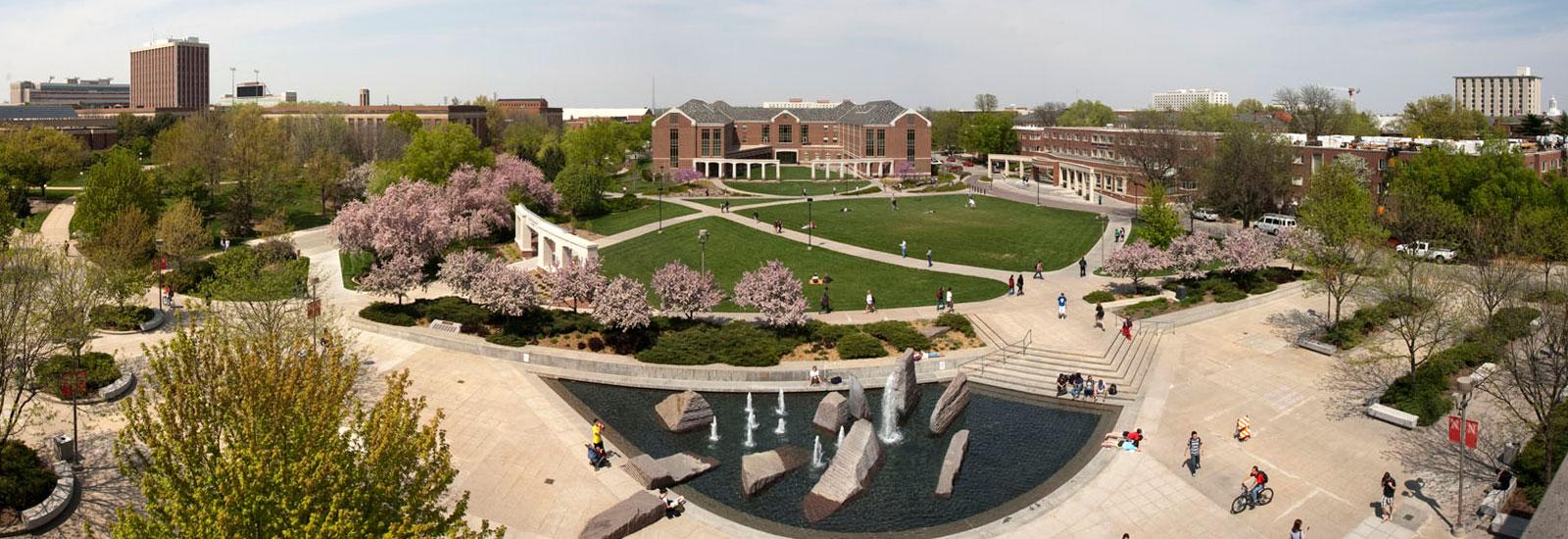
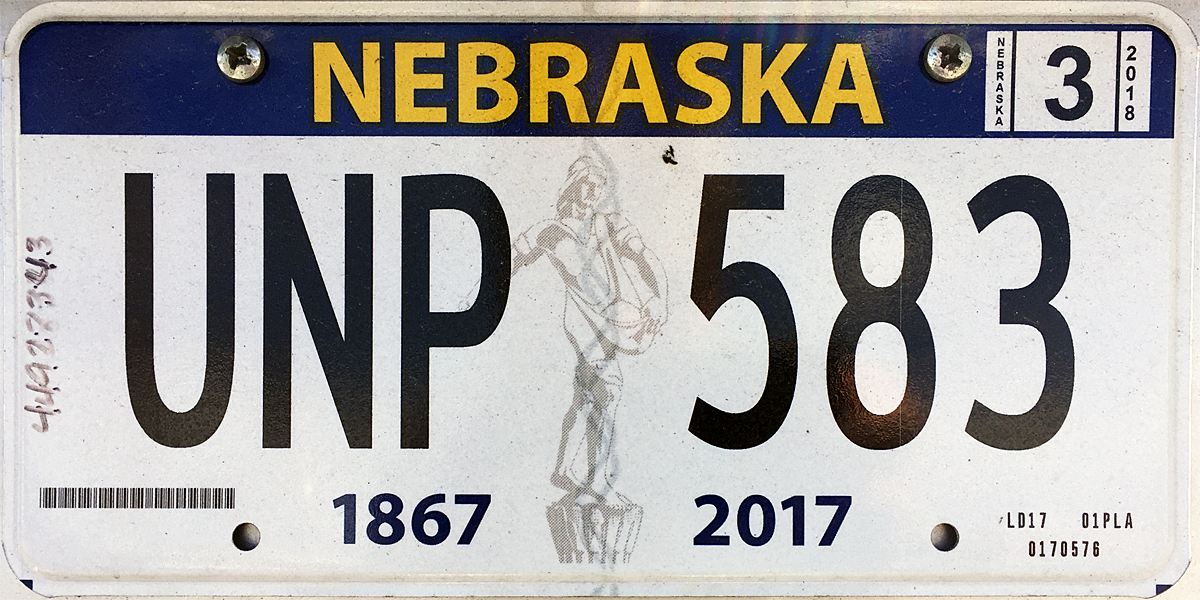






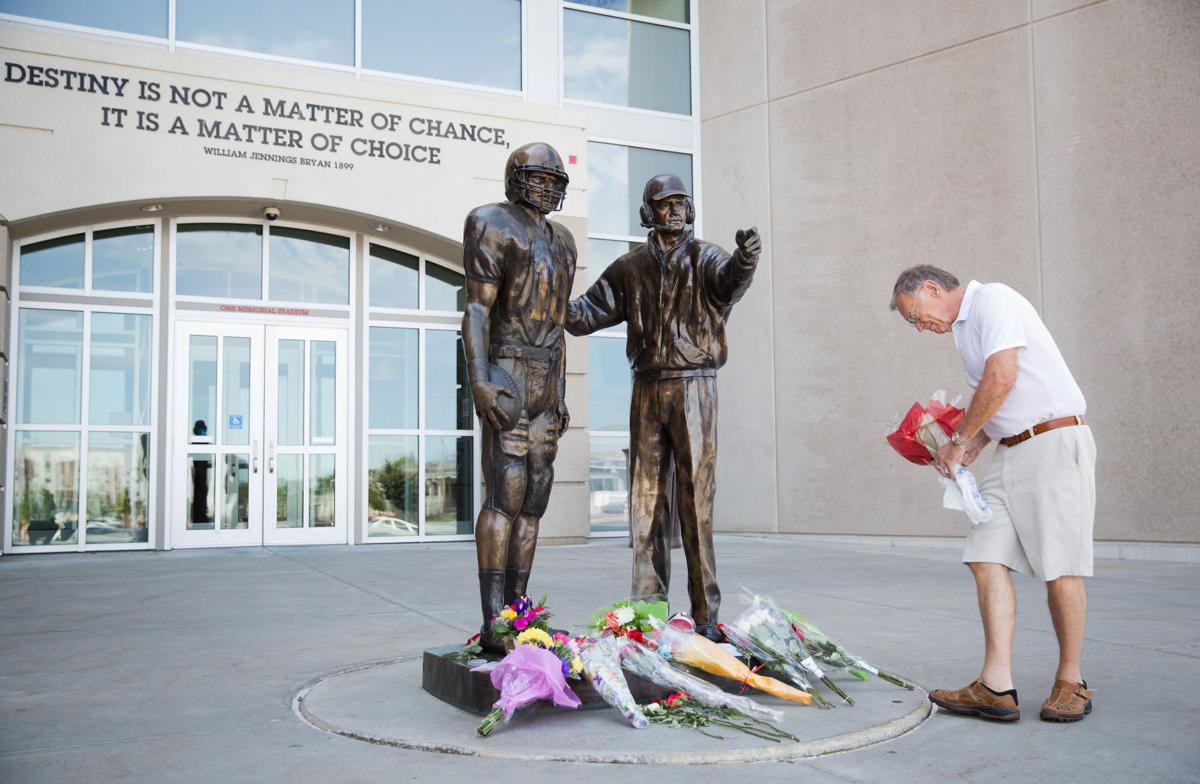
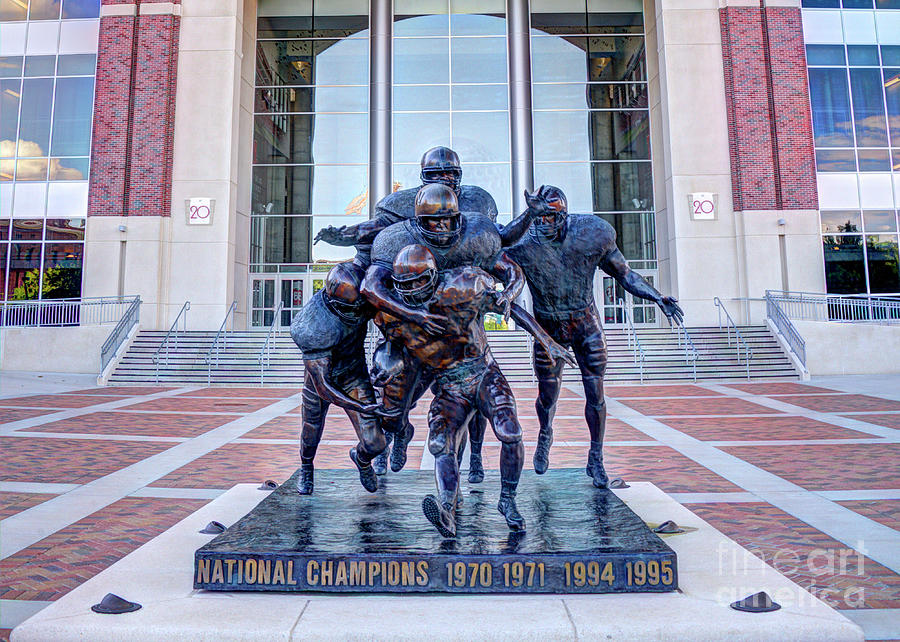





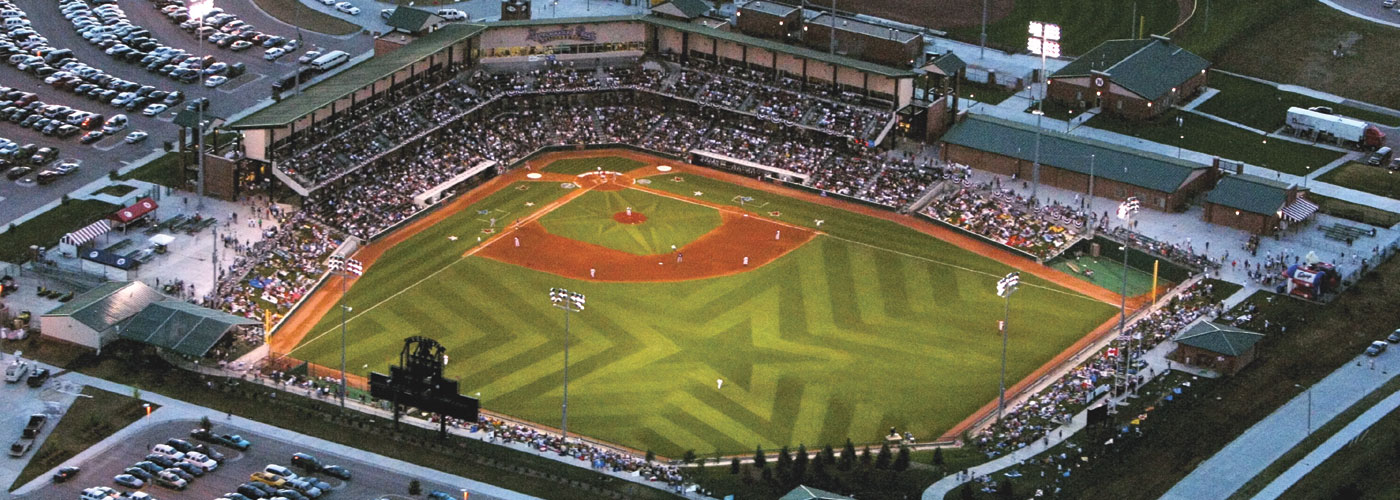
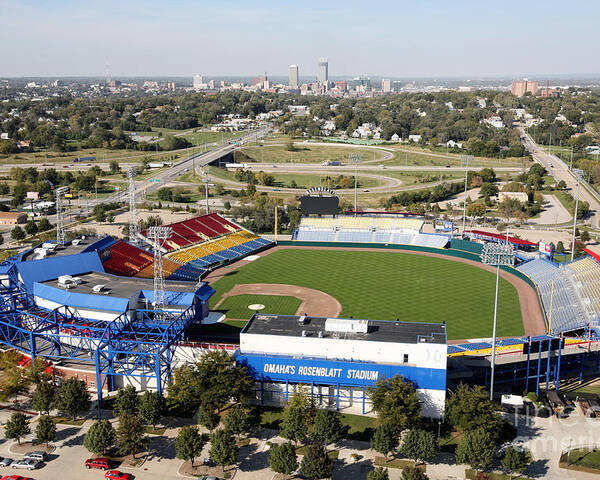
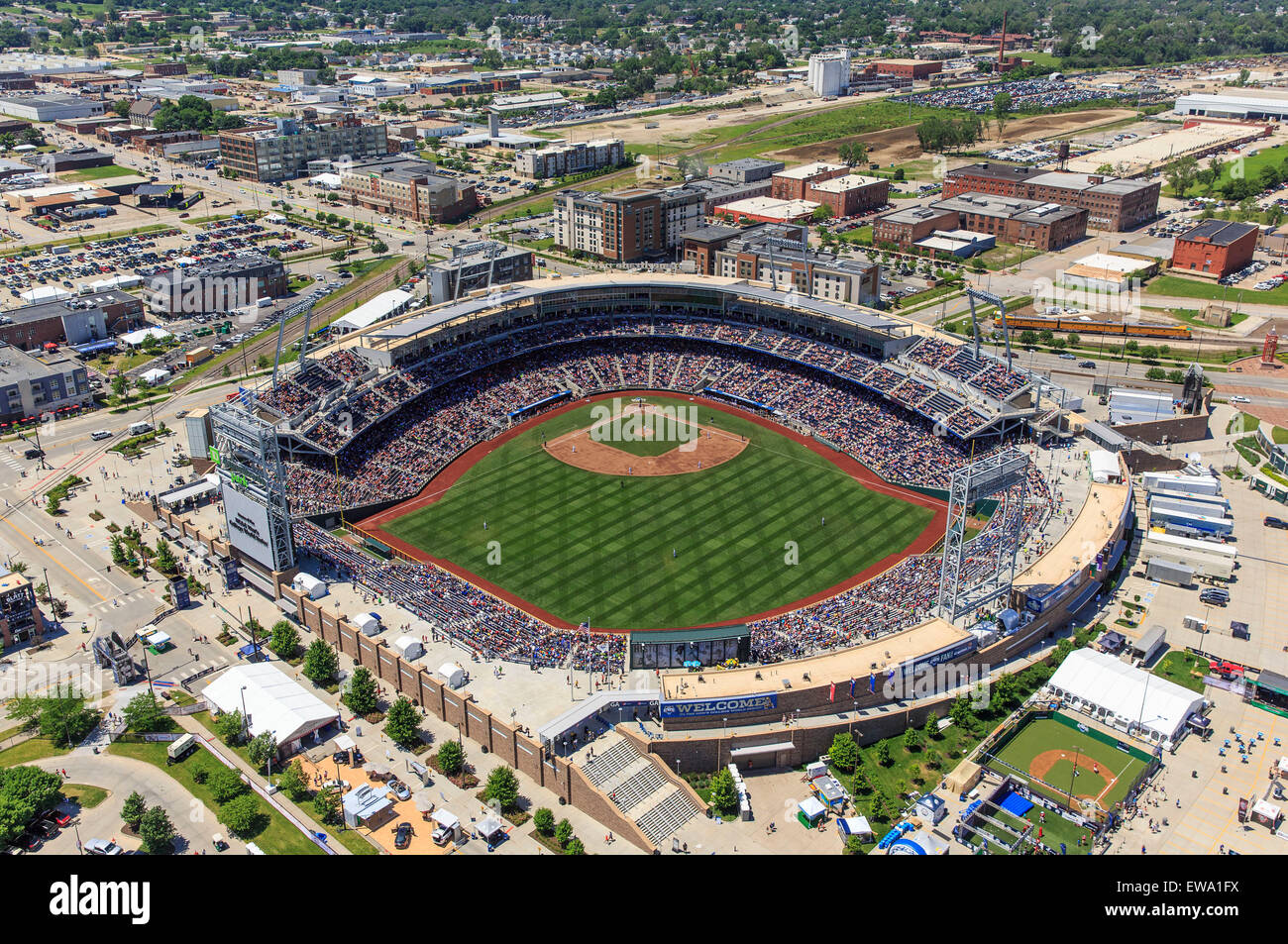
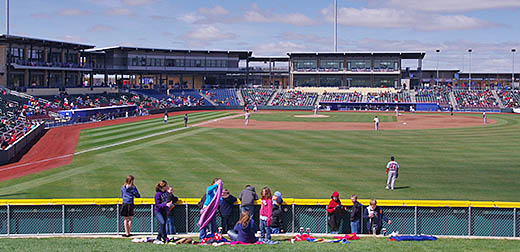
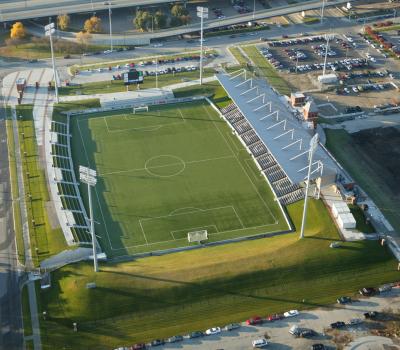

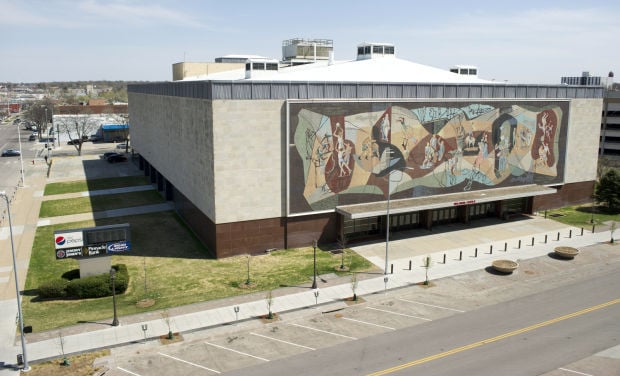
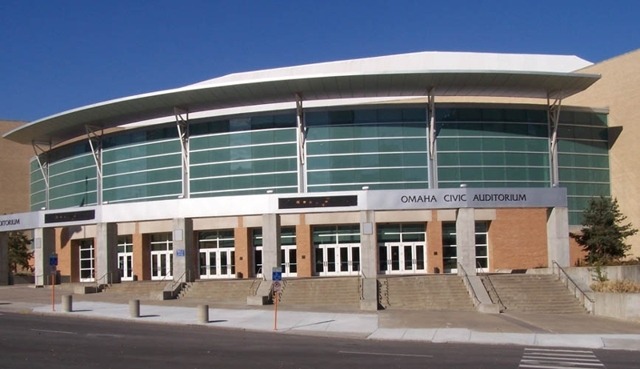


No comments:
Post a Comment